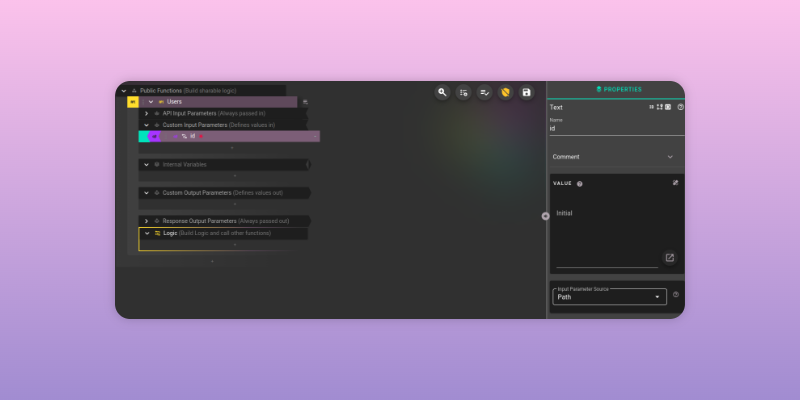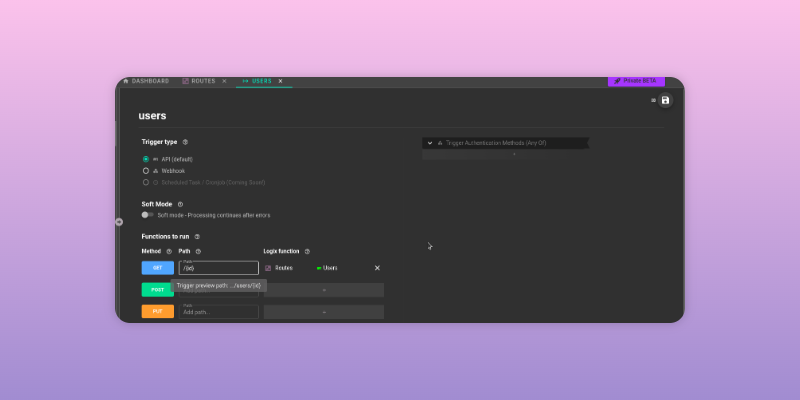HTTP Method
Overview
Defines a HTTP method to be used in a trigger
| Returns |
|---|
| Data Structure |
Defining a method path
You can define a method path using static and dynamic segments, the path will be part of your published Trigger URL.
To add dynamic segments to the path you need to first create a parameter in your Logix, that has the Input Parameter Source set to path. The parameter will then be part of the method path by default as a dynamic segment.

You can add a static segment by using the path editor when editing your Trigger. Open the path editor by clicking on the path input field. You can add multiple dynamic and static segments to your method path.

Example:
A Trigger is called "pets" and the Logix file attached to the GET method has a path parameter called id. The method path is defined as /dog/{id}. The final published Trigger URL will be: /[PUBLISHED TRIGGER ID]/pets/dog/{id}
Parameters
| Parameter | Parameter | Valid Blocks | Required |
|---|---|---|---|
HTTP method | The HTTP method being handled. If you're unsure, start with POST. It's up to you to make sure your functionality matches their intent. Hover the tooltip for each to get further information. | Text Block Group | No |
Logix File | The full path to the Logix file in which the function resides | Text Block Group | No |
Function ID | The ID of the function to call | Text Block Group | No |
Path | Define the URL path for the method. | Text Block Group | No |